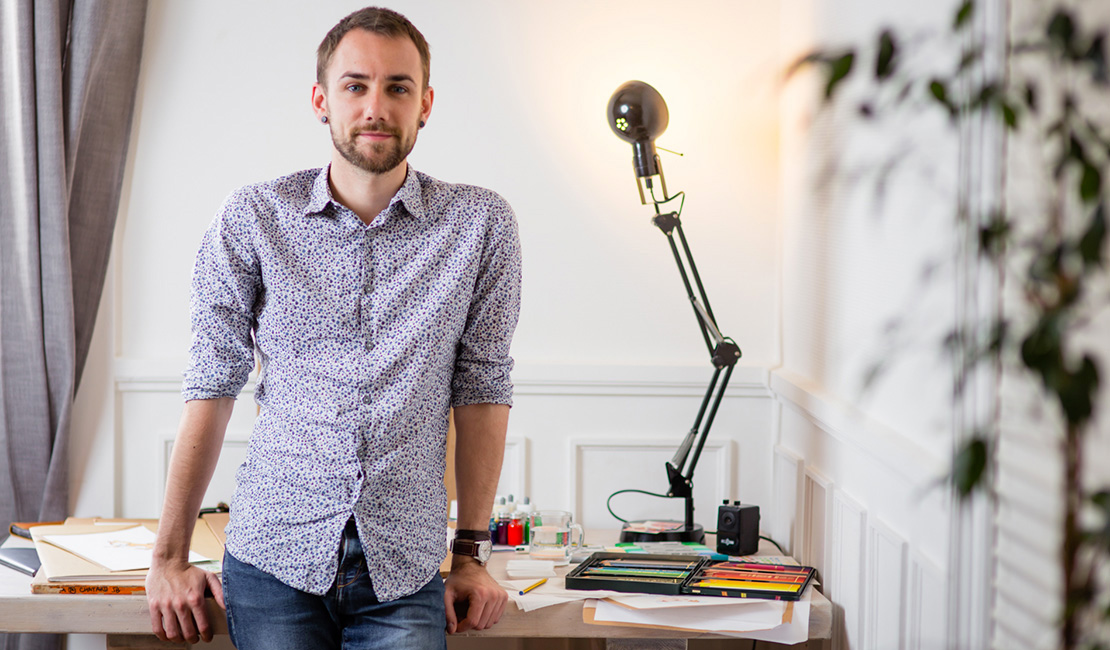Jean-Baptiste
Each drawing is above all a story
A recent graduate of Lyon's Émile Cohl art school, Jean-Baptiste is a promising member of the new generation of illustrator-artists. From Thomas Girard and Woodkid to Claude Barras, Sébastien Mitton and Cédric Peyravernay, the Illustration section of Lyon's famous school regularly sees international figures in graphic art emerge from its benches.
An academic technique combined with a dreamlike imagination give Jean-Baptiste's drawings a poetic quality and a universe in which adults and children alike can immerse themselves and find their own worlds.
In fact, Jean-Baptiste points out that if he hadn't had a talent for drawing as he sees it today, he would have loved to be a milliner. So, naturally, he was drawn to textile design. In this profession, you always have to be attentive and inventive. You have to keep coming back to a line. It's a passion for Jean-Baptiste, and one that helps him bridge the gap between design and fashion. It's a job that allows him to bring his designs to life through the people who use them, who bring them to life in their own worlds, and display them in their homes on their bed linen.
Textile design is a highly specialized field. It's a 4-handed job, with the designer having a precise idea in mind and the draftsman with his own personality and specificity.
" You have to succeed in retranscribing into images what the person has in their imagination." Transcribing this vision while taking into account technical constraints, sizes to be respected, materials to be used, all in harmony with the zeitgeist.
The generosity of the line, the color, the drawing proposed must echo a personality, but not overwhelm it, still less supplant it. Sublimate, but remain subtle.

"What I love about drawing: telling stories".
Storytelling is important at any age. In any drawing, there are two levels of reading:
- Immediacy, where you are a spectator of the image, sensitive to the colors, the atmosphere, even the personification you can make of the motifs.
- A more intellectual vision of the image, referring to sensations, feelings, interpretations and even experiences.
Form and substance are two essential components of a design, and they must always be kept in mind when creating a drawing. The strength of the line only becomes apparent when it forms a whole.

